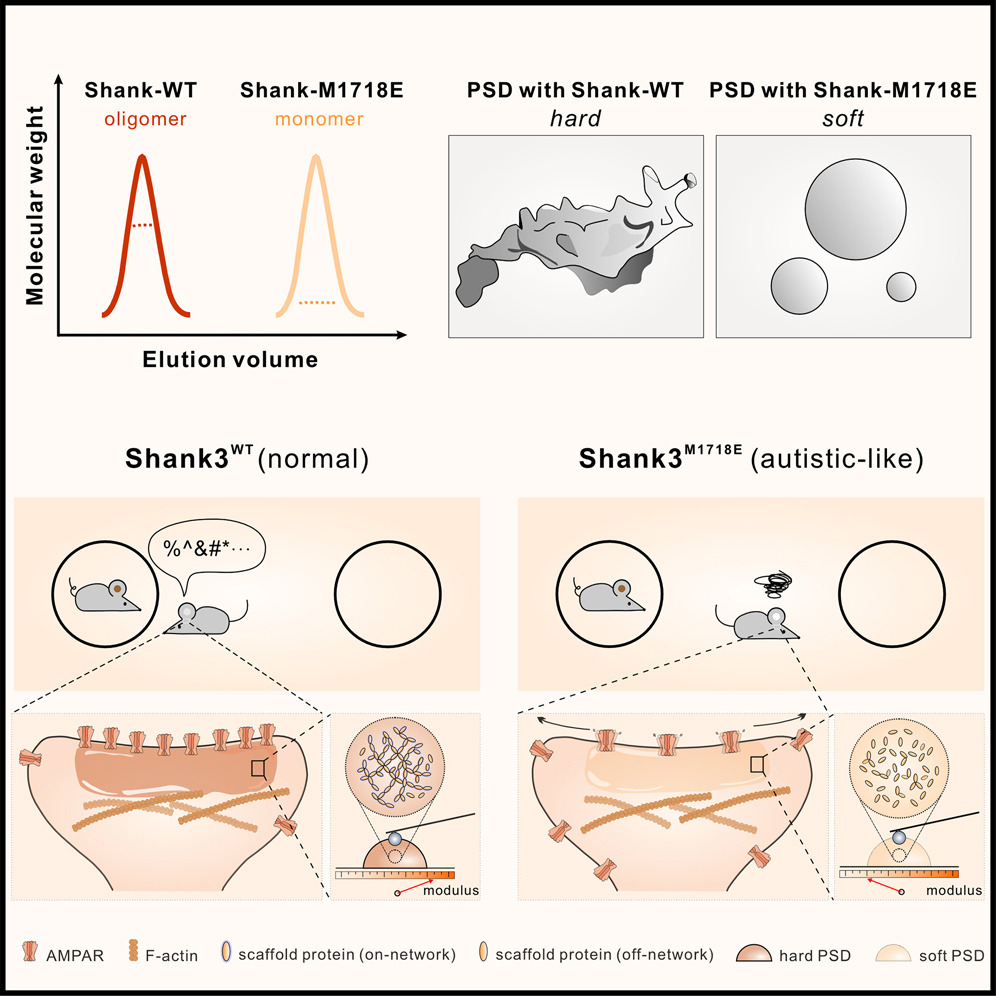PDZ Ligand Binding-Induced Conformational Coupling of the PDZ–SH3–GK Tandems in PSD-95 Family MAGUKs
2018.01.05Zeng, M., Ye, F., Xu, J., and Zhang, M.(2018). Journal of Molecular Biology, 430(1), 69-86.
Discs large (DLG) MAGUKs are abundantly expressed in glutamatergic synapses, crucial for synaptic transmission, and plasticity by anchoring various postsynaptic components including glutamate receptors, downstream scaffold proteins and signaling enzymes. Different DLG members have shared structures and functions, but also contain unique features. How DLG family proteins function individually and cooperatively is largely unknown. Here, we report that PSD-95 PDZ3 directly couples with SH3–GK tandem in a PDZ ligand binding-dependent manner, and the coupling can promote PSD-95 dimerization and multimerization. Aided by sortase-mediated protein ligation and selectively labeling, we elucidated the PDZ3/SH3–GK conformational coupling mechanism using NMR spectroscopy. We further demonstrated that PSD-93, but not SAP102, can also undergo PDZ3 ligand binding-induced conformational coupling with SH3–GK and form homo-oligomers. Interestingly, PSD-95 and PSD-93 can also form ligand binding-induced hetero-oligomers, suggesting a cooperative assembly mechanism for the mega-N-methyl-d-aspartate receptor synaptic signaling complex. Finally, we provide evidence showing that ligand binding-induced conformational coupling between PDZ and SH3–GK is a common feature for other MAGUKs including CASK and PALS1.
- Recommend
-
2025-10-22
IQSEC2/BRAG1 may modulate postsynaptic density assembly through Ca2+-induced phase separation.
-
2025-08-22

Shank3 oligomerization governs material properties of the postsynaptic density condensate and synaptic plasticity.
-
2025-08-21
Modulating synaptic glutamate receptors by targeting network nodes of the postsynaptic density condensate.
-
2025-08-19
Current practices in the study of biomolecular condensates: a community comment.
-
2025-06-10
Phase separation instead of binding strength determines target specificities of MAGUKs.

